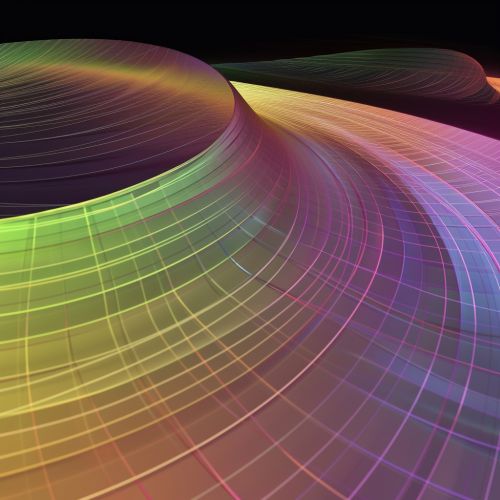Theorema Egregium
Overview
The Theorema Egregium, or "remarkable theorem" in Latin, is a fundamental result in the mathematical field of differential geometry. It was discovered by the German mathematician Carl Friedrich Gauss in 1827. This theorem is a cornerstone of Gauss's work in differential geometry, and it has far-reaching implications in various branches of mathematics and physics.
Mathematical Background
Before delving into the theorem itself, it is crucial to understand some of the mathematical concepts and tools used in its formulation and proof. These include surfaces, curvature, and Gaussian curvature.
Surfaces
In differential geometry, a surface is a two-dimensional manifold. This means that it is a topological space that, near each point, resembles the Euclidean space of dimension 2. Surfaces can be embedded in a higher-dimensional space, such as the three-dimensional Euclidean space, or they can exist independently as abstract manifolds.
Curvature
Curvature is a measure of the amount by which a curve deviates from being a straight line, or a surface deviates from being a plane. In differential geometry, there are several types of curvature, including Gaussian curvature, mean curvature, and sectional curvature. These different types of curvature provide different ways of measuring how curved a surface is.
Gaussian Curvature
Gaussian curvature, named after Carl Friedrich Gauss, is a particular type of curvature of a surface. It is an intrinsic measure of curvature, meaning that it depends only on the distances between points on the surface, not on the way the surface is embedded in space. This is a crucial concept in the statement and proof of the Theorema Egregium.


The Theorema Egregium
The Theorema Egregium states that the Gaussian curvature of a surface is an intrinsic property of the surface, invariant under isometric deformations. In other words, bending or deforming the surface without stretching or tearing it does not change its Gaussian curvature. This is a remarkable result because it shows that the Gaussian curvature, which a priori seems to depend on how the surface is embedded in three-dimensional space, actually depends only on the intrinsic geometry of the surface.
The theorem can be stated more formally as follows: If a surface in R^3 is isometric to another surface in R^3 (that is, there is a map between the surfaces that preserves distances), then the Gaussian curvatures of the surfaces at corresponding points are equal.
Proof of the Theorema Egregium
The proof of the Theorema Egregium is a tour de force of differential geometry. It involves a careful analysis of the properties of surfaces and the Gaussian curvature, and it uses sophisticated mathematical techniques, including the method of moving frames and the concept of the Christoffel symbols.
The proof is too complex to be fully presented here, but the main idea is to show that the Gaussian curvature can be expressed entirely in terms of quantities that are invariant under isometries of the surface. This is done by expressing the Gaussian curvature as a certain combination of the Christoffel symbols and their derivatives, which are in turn defined in terms of the metric tensor of the surface, an intrinsic object.
Implications and Applications
The Theorema Egregium has profound implications in differential geometry and beyond. It is one of the foundational results in the theory of surfaces and has inspired many further developments in the field.
One of the most important applications of the Theorema Egregium is in the field of general relativity, where the concept of curvature plays a central role. The theorem helps to explain why the curvature of spacetime, which is a four-dimensional analogue of the Gaussian curvature of a surface, is an intrinsic property of spacetime that cannot be changed by choosing a different coordinate system.
Another application of the theorem is in the field of geometric topology, particularly in the study of manifolds. The theorem implies that the Gaussian curvature is a topological invariant, which means that it can be used to distinguish between different topological types of surfaces.
